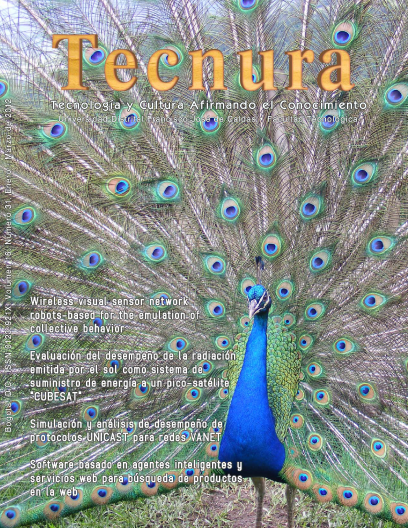DOI:
https://doi.org/10.14483/udistrital.jour.tecnura.2012.1.a01Published:
2012-01-01Issue:
Vol. 16 No. 31 (2012): January - MarchSection:
ConcienciasWireless Visual Sensor Network Robots Based for the Emulation of Collective Behavior
Downloads
Abstract (es)
We consider the problem of bacterial quorum Sensing emulate on small mobile robots. Robots that reflect the behavior of bacteria are designed as mobile wireless camera nodes. They are able to structure a dynamic wireless sensor network. Emulated behavior corresponds to a simplification of bacterial quórum sensing, where the action of a network node is conditioned by the population density of robots (nodes) in a given area. The population density Reading is done visually using a camera. The robot makes an estímate of the population density of the images, and acts according to this information. The operation of the camera is done whit a custom firmware, reducing the complexity of the node without the use of any other external or local commuication. Neither was it necessary to develop a model system, precise state estimation or state feedback.
How to Cite
APA
ACM
ACS
ABNT
Chicago
Harvard
IEEE
MLA
Turabian
Vancouver
Download Citation
License
Esta licencia permite a otros remezclar, adaptar y desarrollar su trabajo incluso con fines comerciales, siempre que le den crédito y concedan licencias para sus nuevas creaciones bajo los mismos términos. Esta licencia a menudo se compara con las licencias de software libre y de código abierto “copyleft”. Todos los trabajos nuevos basados en el tuyo tendrán la misma licencia, por lo que cualquier derivado también permitirá el uso comercial. Esta es la licencia utilizada por Wikipedia y se recomienda para materiales que se beneficiarían al incorporar contenido de Wikipedia y proyectos con licencias similares.


